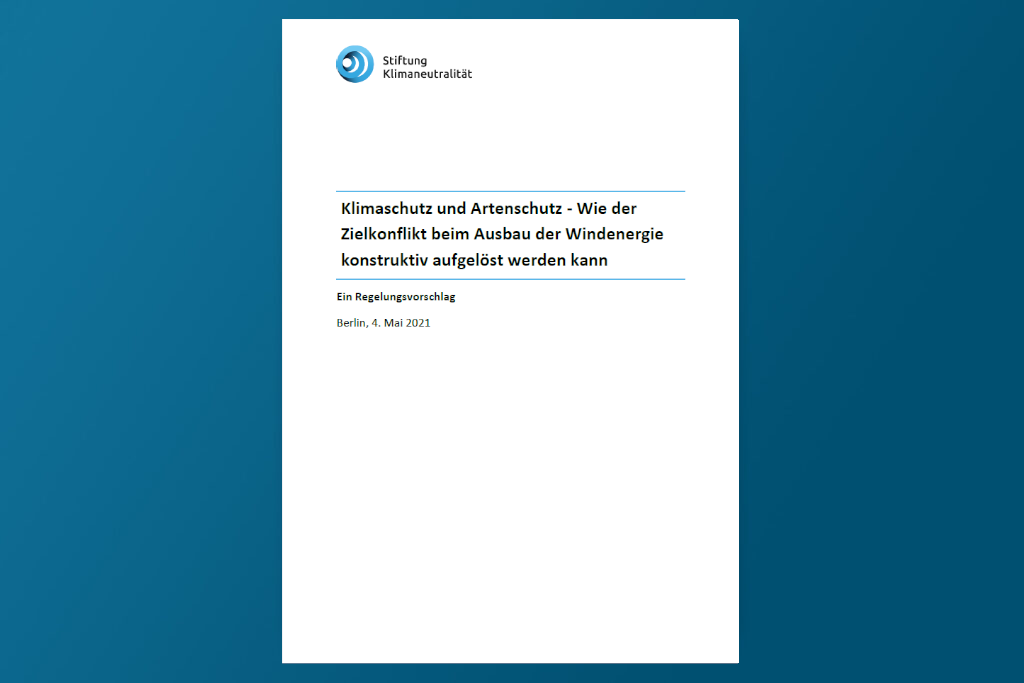Wind energy has a central role to play in the transformation to a climate-neutral economy. Without it, it will not be possible to supply the mobility, building and industrial sectors with CO2-free energy. Onshore wind turbines with an installed capacity of 80 GW will be needed by 2030, and as much as 145 GW by 2045. By the end of 2020, however, just under 55 GW had been installed. However, the expansion of onshore wind energy has slumped massively in the last three years. This trend urgently needs to be reversed.
In addition to the lack of available land, one of the main reasons for this slump is the unresolved conflict of objectives with species protection. Disputes are increasingly ending up in the courts; so far, it has not been possible to reconcile climate protection and species conservation. The Climate Neutrality Foundation has therefore developed a proposal (in German) for resolving the conflict of goals between climate protection and species protection in the expansion of wind energy.
Our proposal is based on a comprehensive species conservation report (Reichenbach/Aussieker, 2021, in German), which used a consistent methodology to identify those breeding bird species whose populations require special protection from additional anthropogenic mortality due to their population biology and endangerment. A probabilistic methodology was used to derive spacing regulations. In a second legal assessment (Scharfenstein/Bringewat, 2021, in German), we examined the scope for action under European law and had reform proposals for the Federal Nature Conservation Act drawn up.
Our proposal includes a simplification and acceleration of the approval of wind energy plants through a legally regulated species protection exception in accordance with the requirements of Article 9 of the Birds Directive. Protective distances around proven nesting sites will ensure that this does not lead to population declines of bird species. In addition, we propose the establishment of a federal-state program for the conservation of bird populations.
